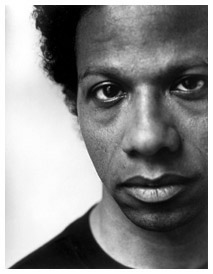Christi Atkinson, Susan Rotilie, Sarah Schultz, Kiyoko Motoyama Sims, Meredith Walters
on
Uttar-Priyadashi.[2] This work could be perceived as traditional East Indian theater-dance from the Westerner's point of view, but from the East Indian's point of view it's a very contemporary interpretation of the traditional forms. It made me rethink how I might design programs with different resident artists and art forms that we bring in from around the world. When the Walker presented
Uttar-Priyadashi, our solution was to invite a scholar of Indian dance and theater, Dr. Sunil Kothari, who was traveling with the company, to speak to students in theater and dance classes at Macalester College and also to have him give a talk before the show. It helped to frame the performance within a more nuanced context than simply traditional or nontraditional. It conveyed that these artists are carrying forward--and adding complexity to--longheld traditions, but using a contemporary vocabulary.
MW: Making those many vocabularies available is so important, and your solution is a perfect illustration of it. Westerners, Americans, anyone removed from that culture, really, have limited vocabularies for that form of dance. As you said, traditional and nontraditional are terms that don't illuminate anything and are in fact misleading.
Audiences unfamiliar with these complex histories are forced to make analogies to what they do know--or think they know--about a foreign culture, which is usually a mix of news reports, a few facts from world history class, or artifacts seen in museums. In a contemporary arts context we had the opportunity to distinguish between flat representations of a culture and the actual artistic process of contemporary dancers from Manipur.
SS: I valued hearing about the various issues and challenges the committee members faced in their own communities surrounding the presentation of contemporary work. Walter Chakela, for example, is dealing with a particular history of revolution and apartheid in South Africa. He was struggling to convince his audience, consisting of primarily black South Africans, that their literature and theater are as good and as valuable as the works of Shakespeare and Chekov. Because European drama was all they ever read or learned about in school, Shakespeare is perceived as literature with a capital L, and
they needed to be convinced that their stories, about revolution and apartheid, were equally "Literature." Though the details vary from locale to locale, in a strange way it was reassuring to discover that everyone around the table was wrestling with the challenge of overcoming audiences' preconceptions and apprehensions about contemporary art.
Christi Atkinson: One thing this initiative has reinforced for me is the power of certain words, such as global and globalism, and how those words can mean dramatically different things to different people. For example, one of our advisors felt that globalism was just a buzzword for the new American imperialism. And yet, no matter how strongly we all felt that these words were problematic, there were no agreed-upon, adequate alternatives to these terms. When our vocabulary itself is shifting, the intended discussions can't even be realized.
KMS: There is a connection between a person's perception of a word--such as globalism, community, local--and the cultural background and history that he or she grew up in. I'm working in an American institution, creating programs for an American audience, yet this process has made it clear that
my ideas of internationalism or globalism stem from being Japanese and growing up in Japan. I have a double perception in a way.
I am sensitive to how Asian culture is often wrapped up into one big category, which hides all the unique qualities and differences within Asian cultures and art. Asia includes China, Japan, and Korea as well as the expanse of Southeast Asia, and we all have very distinct cultural and artistic traditions and histories, although we have a lot of things in common too. From the Westerner's point of view, the commonalties are often emphasized more than the differences. I am much more aware of the need to accentuate differences within Asian cultures, rather than to simplify them in one cultural category.
SS: Do you think there is a tendency in America to lump everyone from one country or continent together?


















